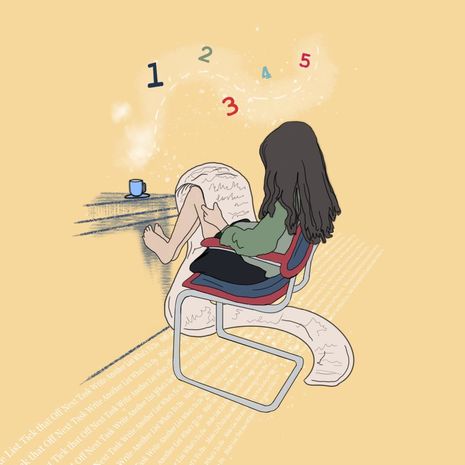Are to-do lists a help or a hindrance?
Lifestyle columnist Agnes Ganet questions whether to-do lists cause more harm than good

I must admit that I am the kind of person that makes lists for absolutely everything and anything. On top of the classic shopping lists which many people make, I also have:
● A list of the books I’d like to read, such as Vanity Fair
● A list of the the items I’d like to buy in the near future, such as a colourful mug
● A list of all the recipes I want to try (maple-roasted sweet potato here we go…)
● And most importantly: a daily to-do list of all the things I should be doing with my time
The main problem is that, though I sometimes perceive to-do lists as my best friends, they can also be my worst enemies. A few years ago, I became so addicted to to-do lists that I actually started making the lists a week in advance. This meant that I knew exactly what I would be doing from Monday morning until the next Sunday evening. Even though such lists are arguably (too) deterministic and leave little room for spontaneity, I quite enjoyed the predictability that they promised. I like the idea of knowing where each day will lead me, and what I can expect to achieve by the end of the day.
“The result is that I often feel like I constantly have to be doing something, even when it doesn’t make me happy anymore”
To-do lists provide me with directions and help to clear my mind of doubt and uncertainty. They prevent me from dwelling too long on questions like ‘what shall I do now ?’, as well as assuring me that a lot of things are possible time-wise. Having an organised perspective allows me to be more efficient, and prevents me from spending too much time on a specific item. This is why I tend to specify the precise slots allocated for each task I need to work on, so that I don’t spend too much time worrying about one thing. Yet, what I enjoy most is the immense satisfaction I feel when checking my list at the end of the day and seeing all the things that I have achieved. Once I’ve finished a certain task, I usually highlight it on my list instead of crossing it out. I’ve found that if I cross items out, then I might forget that I actually achieved them in the first place.
However, there is no denying that lists do have drawbacks. The first drawback is that I am prone to writing never-ending lists. As a result, finishing a task usually requires starting another one right away, without taking any time to relax and be proud. The second drawback is that if I leave anything un-highlighted at the end of the day, I feel like a failure. Even worse – these feelings of guilt and frustration make me forget about the tasks I did actually achieve. Lists can easily become all about ‘being productive’. The result is that I often feel like I constantly have to be doing something, even when it doesn’t make me happy anymore.
Just a few days ago, it struck me that my daily to-do lists are exclusively work-related. All I could read on my lists were things such as ‘Syntax essay’, ‘listen to Li16 lecture’, or ‘French translation’. Not once did these lists include crucial words such as ‘break’, ‘nap’ or ‘rest’, which is odd considering how crucial these are for a balanced day. So I realised that a healthy to-do list has to be a list which never fails to include breaks and hobbies. Instead of only mentioning paperwork and studying, it is important to include leisure time too.
The great thing is that I am so devoted to my daily to-do lists that when I write ‘take a break’ I will, undoubtedly, take a break. Otherwise, several lines in my list would remain un-highlighted, and there is no telling how much I’d hate that. So if you take one thing away from this article, then please make it this: a healthy to-do list is a guideline and not a lifeline. Making your to-do list a lifeline is bound to result in misery and disappointment, both of which should be avoided at all costs!
 News / Uni members slam ‘totalitarian’ recommendation to stop vet course 15 January 2026
News / Uni members slam ‘totalitarian’ recommendation to stop vet course 15 January 2026 Science / Why smart students keep failing to quit smoking15 January 2026
Science / Why smart students keep failing to quit smoking15 January 2026 Comment / Will the town and gown divide ever truly be resolved?12 January 2026
Comment / Will the town and gown divide ever truly be resolved?12 January 2026 Interviews / The Cambridge Cupid: what’s the secret to a great date?14 January 2026
Interviews / The Cambridge Cupid: what’s the secret to a great date?14 January 2026 Features / How sweet is the en-suite deal?13 January 2026
Features / How sweet is the en-suite deal?13 January 2026










